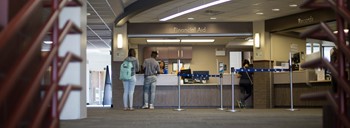
Financial Aid
Over half of Anoka-Ramsey students receive grants or scholarships. You could be one of them!

All students admitted to Anoka-Ramsey Community College that meet the basic eligibility criteria and complete the FAFSA form are eligible for some form of assistance.
Anoka-Ramsey is a smart, practical choice for students who want to complete their general requirements with as little debt as possible.
Your college dollars go further at Anoka-Ramsey Community College, where we offer the lowest college tuition in the state.
The Net Price Calculator is a tool for students and parents to use to get an estimate of what it may cost to attend Anoka-Ramsey.

Over half of Anoka-Ramsey students receive grants or scholarships. You could be one of them!
Learn more about the many ways to cover the costs of tuition, fees and books, including:
*Counting on financial aid to help cover tuition costs? Apply early! You can submit your FAFSA form even before you’ve been accepted for admission – and that will improve your chances of getting aid on time to register for classes. Contact us if you need help completing your FAFSA.
Financial Aid: 763-433-1500
Business Office: 763-433-1600
Scholarship Office: foundation@anokaramsey.edu